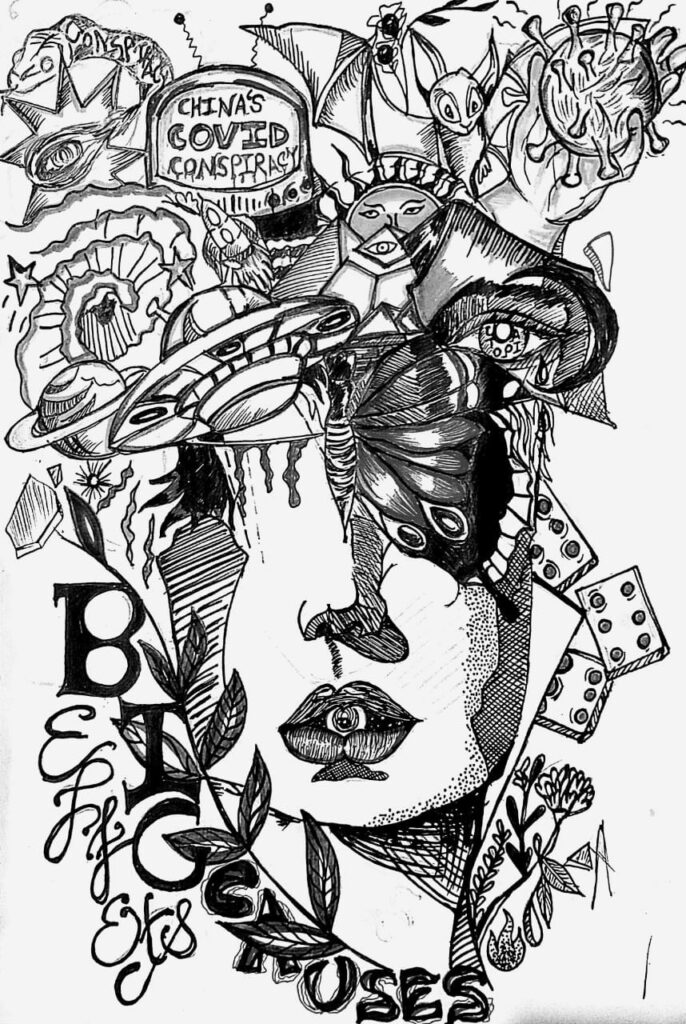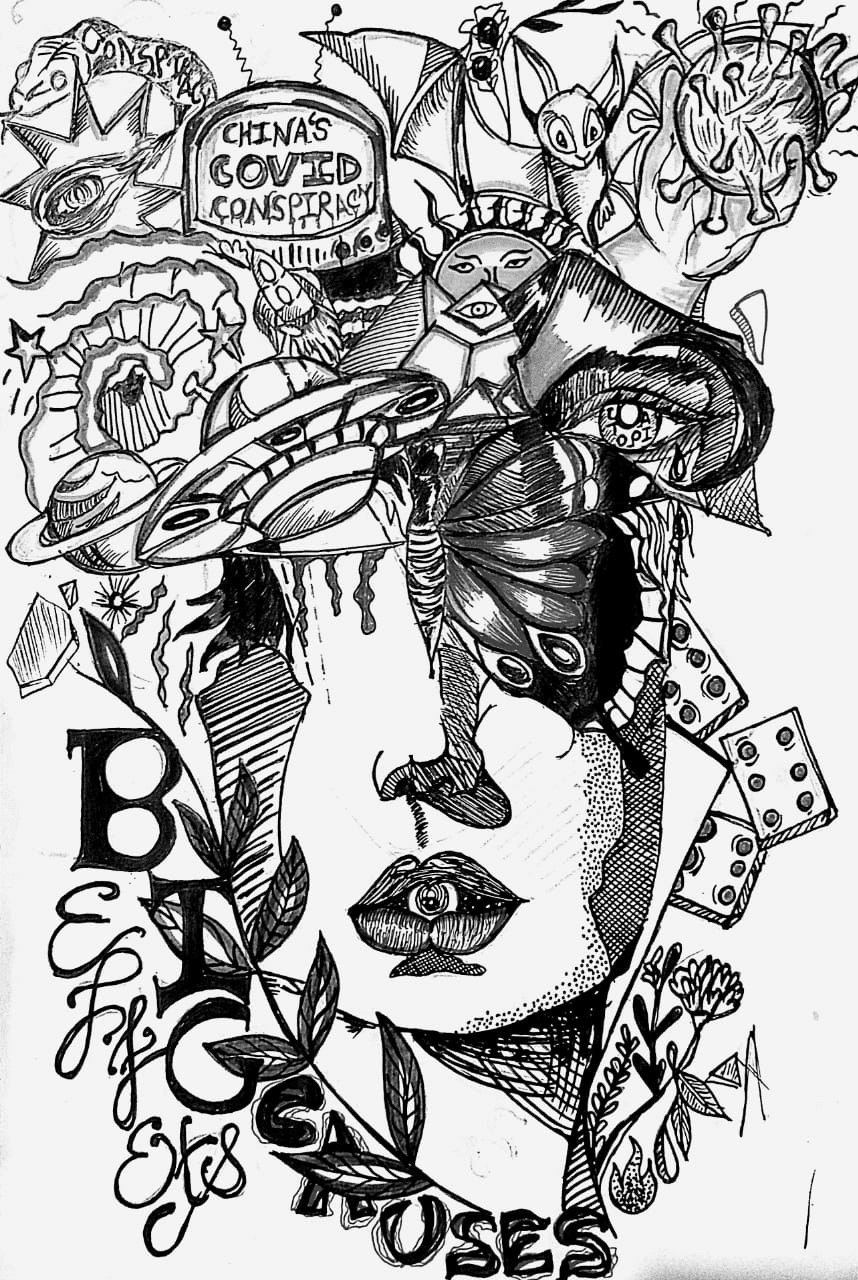
Did you ever unknowingly invest time in a conspiracy theory that fascinated you? Or perhaps, thought about how people easily start believing the earth is flat? There are many things in this world that to a person won’t make sense even in their own truth. The human mind frequently tries to define situations as it thinks is fit, rather than how it actually happened. We can term that as cognitive bias. Cognitive bias itself has many facets, but the one that is perhaps a significant cause for any arising conspiracy theory is proportionality bias.
“When something big happens, we tend to assume that something big must have caused it.”
–Rob Brotherton
The proportionality bias
Proportionality bias is the tendency to assume that the magnitude of causes of any event is proportional to the severity of the outcomes. While many other psychological factors contribute to the birth of conspiracy theories, proportionality bias is what makes it so appealing. Our brain is always searching for a pattern in every event and incident that happens around us. Simultaneously, it is also our tendency to find consistency and comparability in everything and every situation. When we combine both of these habits, we can clearly see how proportionality bias is so prevalent and embedded deep in our psyche.
Even apart from conspiracy theories, proportionality bias is at the root of assumptions and thoughts about causation in any case. Let’s take a civil suit, for example. The more intensive the damage is, the more we try searching for more significant causes. It is inherently unsatisfying to accept that something comparatively insignificant could’ve caused anything of substantial consequences.
Now, proportionality bias may be one of the main causatives, but there’s more to our susceptibility than that. Believing in or intuitively leaning towards narratives that confirm our own pre-established beliefs is another contributing factor to conspiracy theories. It’s lucrative and satisfying to think that we were right all along — that we already had a rough idea about the supposed truth. This is called confirmation bias. The events which generate conspiracy theories are sometimes multifaceted and complex to be understood by one glance. So naturally, our tendency makes us accept the substance that matches our thinking, regardless of whether it’s true or not, and discard other evidence that doesn’t align with our opinions.
Conspiracy theories and the Coronavirus
To elaborate more on the subject, let’s take the example of the elephant in the room (ironically so, since it’s microscopic)—the Coronavirus. The pandemic has taken the world by its grip, and people are still in a desperate struggle against it. According to the initial findings, it was transmitted through a bat. Exactly how, though remains a mystery. The most mentioned among likely sources is the wet markets of China. With a wide range of meats on sale, it naturally includes freshly killed animals—which are allegedly the origin of the outbreak.
What we do know is that the virus crossed the species barrier, being transmitted from a bat to a human. But the consequences of this relatively simple event turned out to be devastating. Hence, most of humanity still can’t accept it as the cause. Unsurprisingly, this resulted in a whirlpool of conspiracy theories. If you follow the news related to corona, even in a remote manner, you might be familiar with these statements:
“The virus was engineered in a Chinese lab.”
“It was meant to be a biological weapon.”
“This was all Bill Gates’ attempt to implant us with microchips.”
“5G is the reason for the virus.”
“The pandemic was engineered by pharmaceutical companies to profit”
“USA and China are in cahoots and have caused this pandemic together.”
If you don’t believe in any of these theories, the chances are that you’re a person of fact. If you accept a few of these but reject others, you’re showing a certain degree of reason and rationality, but are swaying in favour of a few theories. Lastly, if you believe that all of these are possible, then you may identify as the classic conspiracy theorist.
The reason we retort to such theories while talking about the Coronavirus is simple—we are powerless against it. In the simplest terms, something we can’t even see has sent the world into a frenzy. The bias kicks in, and we refuse to believe the reality as it’s being told to us. You could say that this bias stems out of frustration, and you wouldn’t be wrong in this case.
It is crucial to acknowledge that there are a few other variables in play here. With social media running rampant in the information chain, people feel free to share information without worrying about any consequences. The statements and theories they put up might be correct. But in case they aren’t, they are virtually exempt from any accountability.
The worrying thing is, certain politicians and media outlets are also making it a habit of functioning in this manner, although ideally, they are obligated to be answerable. A lot of them are guilty of peddling a few, or all of the theories stated above. The public attaches a high degree of credibility to their statements and hence believes them with or without proof.
Your peers claim China manufactured the virus. You had the journalists on your TV screen screaming the same. Maybe your politicians did too. But in the current scenario where proof remains lacking, one way in which you could believe all of this is if your brain refused to accept that one person eating a raw bat caused all of this. Here, your proportionality bias kicked off the chain reaction. And if the idea is embedded deep enough inside your head, you will actively look for arguments that support your opinion. This would also involve the rejection of ideas that oppose your opinion. This generally happens because we tend to find gratification in the notion that we were right all along. At this point, the confirmation bias takes over where the proportionality bias left off.
Another example is the tale of two assassination attempts—John F. Kennedy and Ronald Raegan. Kennedy, who was the 35th President of the United States of America, was shot dead by a former U.S. Marine. At the surface, it was pretty plain and simple—one person shooting another. But the victim’s stature complicated things. Although conspiracies were concocted and later disproved, they still hover in the minds of many even today. People couldn’t accept that a single person decided that he wanted the President of the United States dead, and hence shot him.
Raegan on the other hand, who served as the 40th President, survived an assassination attempt on him. The public got a happy ending, with Raegan walking out of his house waving at cameras shortly after. This predicament was simply deemed as a lone gunman’s failed assassination attempt—but why? The answer is simple. Raegan survived. The gunman failed here and hence couldn’t alter the course of history the way Kennedy’s assailant did. Hence, humanity could easily cope with it.
Dealing with the bias
Thankfully, we are not slaves to this bias. There are several good practices we can follow to make sure that our proportionality bias doesn’t get the better of us.
Sensibility:
Initially, the most ambitious (or simply preposterous) theories can simply be ruled out on the basis of sensibility. The hen might’ve come first. The egg could’ve, too. But saying that they were made in labs to kill us by ruining our diets is pushing it.
Fact-Checking:
Conspiracy theories might be true, but not until they are verified. It’s possible to have theories about small things, that may have already been confirmed or falsified. Do remember to check once. Or twice. Thrice if you need to.
Looking Into Non-Conspiracy Alternatives:
When we are convinced of a theory, it’s hard to consider other explanations. Especially ones that are less extravagant — even though they might be true. Putting the bias aside and looking at such explanations is necessary.
The process of how a human mind is led to believe any theory is a complex one. A lot of biases come into play, of which proportionality and confirmation bias are just a few. Still, in a lot of situations, they become the root cause that starts off a chain reaction, making people come up with borderline unrealistic theories. They show how easily a mind can be deceived into thinking of something due to its own limits of perceiving the truth. It might be comfortable to actually believe in them since the truth can be hard to accept. But in this age of internet and easy communication, these theories can now be spread limitlessly and find people who connect with them. Perhaps, now more than ever, being a skeptic and doing your own research is a good practice to prevent yourself from being swayed by baseless premises.
Written by Anushka Bhattacharyya and Rithik Talwar for MTTN
Edited by Tanya Jain for MTTN
Featured Image by Adil Khan for MTTN

Leave a Reply
You must be logged in to post a comment.